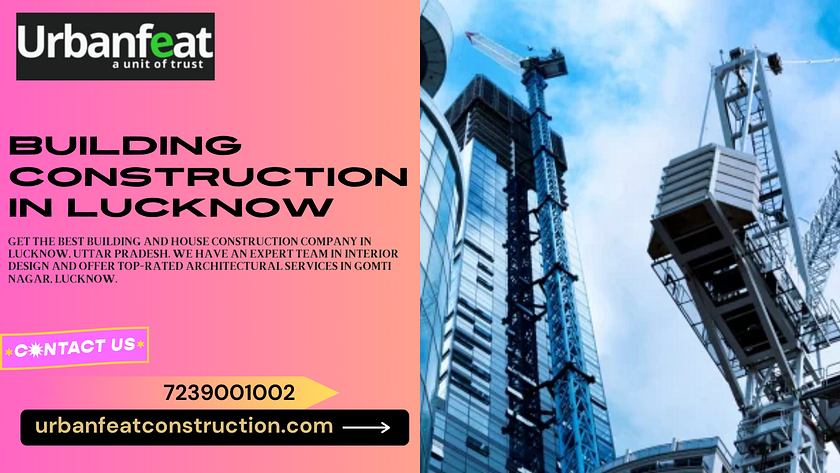Lucknow, the capital city of Uttar Pradesh, is known for its rich cultural heritage, historical landmarks, and modern urban development. In recent years, the city has seen a significant boom in building construction, driven by a combination of population growth, economic development, and government initiatives. This article explores the factors contributing to the construction in Lucknow, the current trends in the industry, and the challenges faced by builders and developers.

Building Construction in Lucknow
Factors Driving Construction Growth
1. Population Growth
Lucknow has experienced rapid population growth, with a steady influx of residents moving from rural areas and other cities in search of better employment opportunities and living conditions. As the population increases, the demand for housing, commercial spaces, and infrastructure also rises, prompting a surge in construction activities.
2. Economic Development
The city’s economic landscape has transformed over the past decade, with various industries setting up operations in Lucknow. The establishment of IT parks, manufacturing units, and educational institutions has created a demand for office spaces, residential complexes, and retail establishments. This economic growth has encouraged both local and national builders to invest in construction projects.
3. Government Initiatives
The Uttar Pradesh government has introduced several initiatives to promote urban development in Lucknow. Schemes such as the Pradhan Mantri Awas Yojana (PMAY) aim to provide affordable housing for all, which has led to an increase in residential construction. Additionally, the government has invested in improving infrastructure, such as roads, public transportation, and utilities, making the city more attractive for builders.
Current Trends in Building Construction
1. Sustainable Building Practices
With an increasing awareness of environmental issues, many construction projects in Lucknow are adopting sustainable building practices. Builders are incorporating eco-friendly materials, energy-efficient designs, and water conservation techniques into their projects. Green buildings not only reduce environmental impact but also attract buyers looking for sustainable living options.
2. Rise of Gated Communities
Gated communities have become increasingly popular in Lucknow, offering a sense of security and exclusive amenities to residents. These developments often feature modern facilities such as swimming pools, gyms, parks, and community centers, appealing to families and professionals alike. The demand for such communities has spurred construction companies to focus on developing these types of projects.
3. Mixed-Use Developments
Mixed-use developments, which combine residential, commercial, and recreational spaces in a single project, are gaining traction in Lucknow. These developments cater to the needs of modern urban living by providing residents with easy access to shops, workplaces, and leisure activities. This trend not only maximizes land use but also fosters a sense of community among residents.
Challenges in the Construction Industry
1. Regulatory Hurdles
Despite the growth in construction activities, builders in Lucknow face various regulatory challenges. Obtaining permits and approvals can be a lengthy and bureaucratic process, leading to delays in project timelines. Streamlining these processes is crucial for sustaining the momentum of construction in the city.
2. Land Acquisition Issues
Land acquisition remains a significant challenge for construction companies in Lucknow. Disputes over land ownership, compensation demands from landowners, and lengthy legal processes can hinder development projects. Addressing these issues is essential to ensure a smooth construction environment.
3. Skilled Labor Shortage
The construction company in Lucknow, like many other cities in India, is grappling with a shortage of skilled labor. While there is a high demand for construction workers, the availability of skilled artisans and craftsmen is limited. Training programs and vocational education can help bridge this gap and ensure that the industry has access to a skilled workforce.
Conclusion
Building construction in Lucknow is on an upward trajectory, fueled by population growth, economic development, and government initiatives. As the city continues to modernize and expand, it is essential for stakeholders to address the challenges faced by the industry. By embracing sustainable practices, focusing on mixed-use developments, and streamlining regulatory processes, Lucknow can pave the way for a thriving construction sector that meets the needs of its residents and enhances the city’s overall quality of life.




.jpeg)
Comments